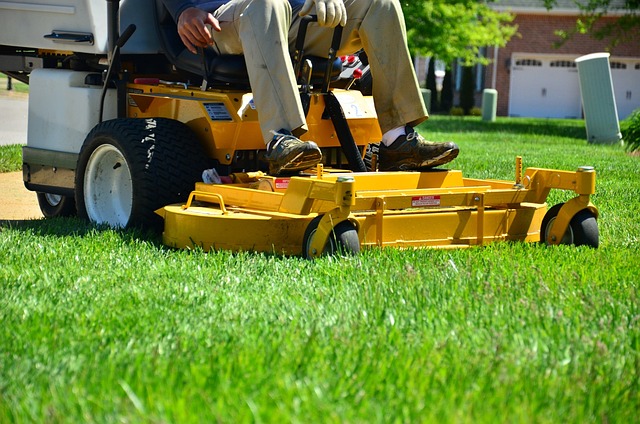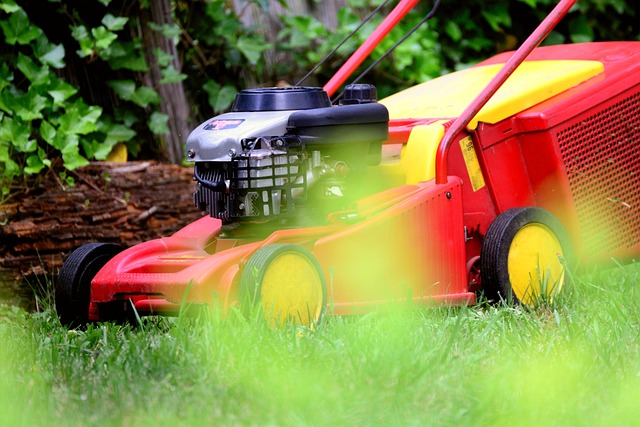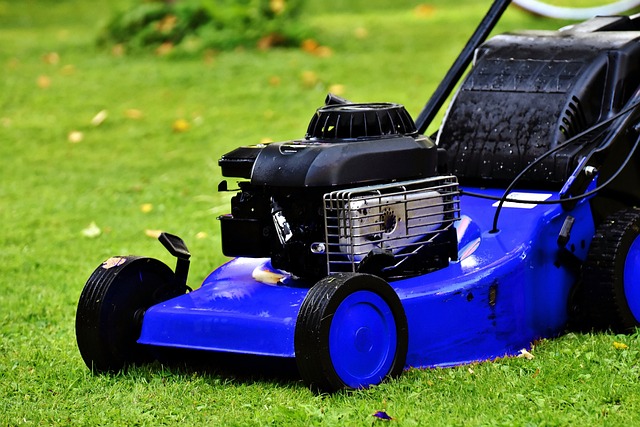Tree Trimming & Pruning for Optimal Lawn Care and Landscaping: Regular trimming and pruning, performed by professional services, are essential for maintaining tree health, preventing diseases & infestations, and enhancing landscape value. Best practices involve using clean tools, precise cutting angles, and limiting foliage removal to 25% per session. The ideal timing is late winter/early spring when trees are dormant, using sharp shears for clean cuts at a 45-degree angle to avoid damage. Strategic pruning improves air circulation and sunlight penetration, tailoring techniques to different tree species for overall vitality and aesthetic appeal in lawn care and landscaping.
“Enhance your outdoor space with expert tree trimming and pruning services, a crucial aspect of lawn care and landscaping. This comprehensive guide delves into the art of maintaining your trees, highlighting benefits from improved aesthetics to safety. We explore best practices for both professionals and homeowners, ensuring healthy trees and picturesque landscapes. Discover the essential techniques and tools for safe tree maintenance, fostering vibrant outdoor spaces. Incorporate these tips into your lawn care routine with ease.”
- Understanding Tree Trimming and Pruning: Benefits and Best Practices
- The Role of Professional Lawn Care and Landscaping Services in Tree Maintenance
- Essential Tips for Homeowners: Safe and Effective Tree Trimming Techniques
Understanding Tree Trimming and Pruning: Benefits and Best Practices

Tree trimming and pruning are essential practices in lawn care and landscaping, offering numerous benefits for both the trees and the surrounding environment. These techniques involve selectively removing dead, diseased, or excess branches to promote healthy growth, enhance aesthetics, and improve overall tree structure. By understanding the best practices, homeowners and landscaping professionals can ensure that their trees thrive while maintaining a well-manicured outdoor space.
Regular trimming encourages proper airflow and sunlight penetration, reducing the risk of pest infestations and fungal diseases. It helps in shaping the tree, preventing it from becoming too large for its location, and addressing potential safety hazards posed by overhanging branches. Pruning also stimulates new growth, fostering a robust and vibrant tree that contributes positively to the landscape’s overall beauty and value. Best practices include using clean, sharp tools, making cuts at the right angles, and removing no more than 25% of the tree’s foliage in a single session to avoid stress and promote healing.
The Role of Professional Lawn Care and Landscaping Services in Tree Maintenance

Professional lawn care and landscaping services play a pivotal role in maintaining the health and aesthetic appeal of trees within residential, commercial, or public spaces. These experts are equipped with the knowledge and specialized tools to trim and prune trees effectively, ensuring they remain robust and vibrant. Their expertise goes beyond mere aesthetics; proper tree maintenance is crucial for safety, as well as the long-term survival of the plant.
By employing skilled technicians, lawn care and landscaping services can identify diseased or damaged branches, remove them, and promote new growth. This involves strategic pruning to improve air circulation and sunlight penetration, both vital for a tree’s overall well-being. Moreover, these professionals understand the unique requirements of different tree species, allowing them to tailor their trimming and pruning techniques accordingly.
Essential Tips for Homeowners: Safe and Effective Tree Trimming Techniques

Tree trimming is an essential part of lawn care and landscaping, ensuring your trees remain healthy and vibrant. As a homeowner, it’s crucial to understand the proper techniques for safe tree pruning. One key tip is to identify the right time to trim; late winter or early spring is ideal as most trees are still in dormancy, minimizing stress on the plant. Avoid trimming during active growth periods, as this can lead to excessive bleeding and potential damage.
When it comes to tools, sharp, clean shears are a must. Dull tools can cause damage, leading to disease and insect infestation. Prune branches that are dead, diseased, or crossing and rubbing against each other. Maintain a clean cut, angling the knife at a 45-degree angle to encourage new growth. Remember, less is often more; excessive trimming can harm the tree. Regular, thoughtful pruning will enhance your property’s aesthetics while promoting the overall health of your trees, creating a beautiful and well-maintained lawn care and landscaping environment.
Tree trimming and pruning are essential practices for maintaining healthy trees and enhancing outdoor spaces. By understanding the benefits and best practices, homeowners can ensure their trees thrive. Professional lawn care and landscaping services play a crucial role in providing expert knowledge and safe techniques. Armed with these insights, individuals can effectively manage tree maintenance, contributing to both the beauty and longevity of their greenery. Incorporating proper trimming techniques, as outlined in this article, allows for the cultivation of strong, vibrant trees, ultimately enriching your lawn care and landscaping efforts.
